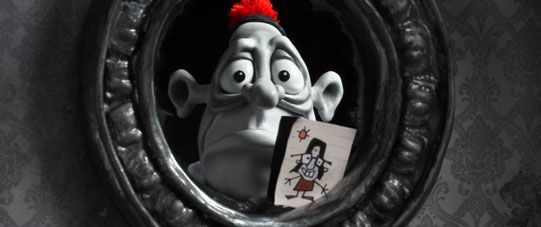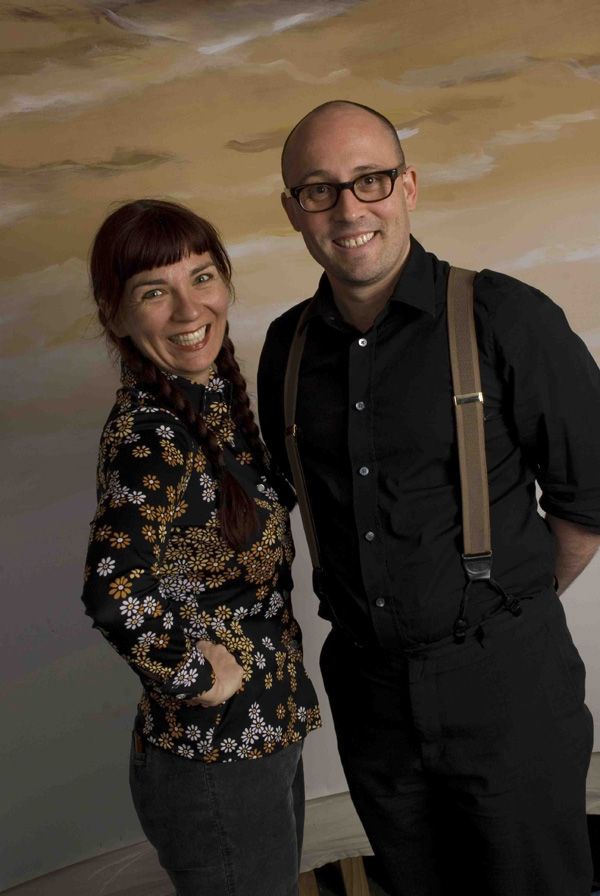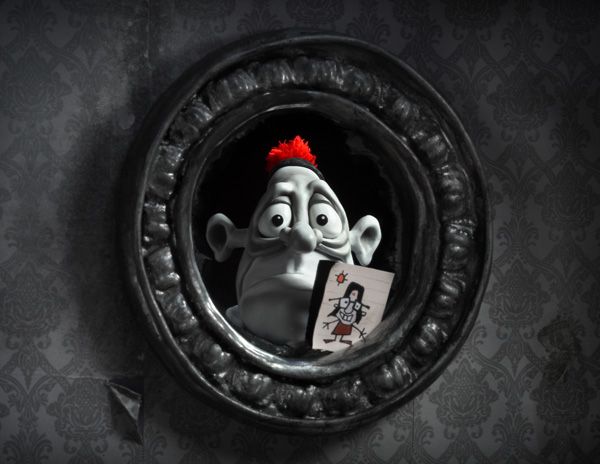It was created with Claymation, its main characters speak with adorable accents, and funny-looking animals are involved - but "Wallace and Gromit" this ain't.
Director Adam Elliot won an Oscar for 2003's "Harvie Krumpet", a 23-minute animated short about a one-testicled, Tourette's-ridden World War II survivor and animal rights activist, and he brings that same gift for unique characters and melancholy overtones to his debut full-length feature "Mary and Max". My review after the jump:
"Mary and Max" is an unusual, difficult-to-describe movie, to say the least. The broad strokes go like this: Mary Daisy Dinkle, a crushingly lonely eight-year-old Australian girl with a largely absentee father and an overbearing monster for a mother, goes thumbing through a post office phone book, chooses a random name - Max Jerry Horovitz of New York - and sends him a letter, thus beginning a long transcontinental friendship.
It's a friendship that both Max and Mary desperately need. Mary, with a birthmark on her forehead that looks like poop, endures terrible abuse at home and at school, while the overweight, anxious Max spends his days picking up litter and attending Overeaters Anonymous support groups between "chocolate hot dog" binges. If that sounds like an awful lot of strange darkness for one movie, it is - but it only serves to underscore "Mary and Max's" tremendous, bittersweet heart.
As comically overstated as parts of it can seem, Elliot says "Mary and Max" is based on a true story - and in fact, the Australian filmmaker has enjoyed a 20-year pen pal friendship with a New Yorker who, like Max, has Asperger syndrome. Max's discovery of his diagnosis is arguably the key moment in the film, setting in motion Mary's pursuit of her life's calling (which echoes Elliot's real-life dedication to educating people about the disease). What really sets the movie apart, though, is Elliot's deft way with "Mary and Max's" larger themes - namely self-acceptance, the redemptive power of honest human connection, and the idea that life is really more about the journey than the destination. (Do not, in other words, expect a Disney-style happy ending in the third act.)
It's an unusual film, in the best sense of the word. We've seen enough animated features for adults that it probably isn't accurate to say "Mary and Max" does anything new for the form, but it's still probably the most powerful Claymation movie you're likely to see. Like a juggling unicyclist under the big top, Elliot gives the appearance of imminent failure - an unlikely coincidence here; a gag about rooster shit there - but what looks like chaos is a carefully considered rhythm, and by the time Mary finishes her second letter to Max, scribbling on pilfered butcher paper by the light of an open refrigerator and wondering how people can be so mean, you shouldn't be surprised if you find yourself blinking back tears along with her. Like Mary and Max's friendship, this movie is an act of tenderness that will linger long after the closing credits roll.
Jeff Giles is the editor-in-chief of Popdose and dadnabbit, as well as a frequent contributor to Bullz-Eye and an editor at Rotten Tomatoes.
Mary and Max (IFC, 2009)
Starring: Toni Collette, Phillip Seymour Hoffman, Barry Humphries, Eric Bana
Director: Adam Elliot
Rating: NR
Category: Animated Drama




